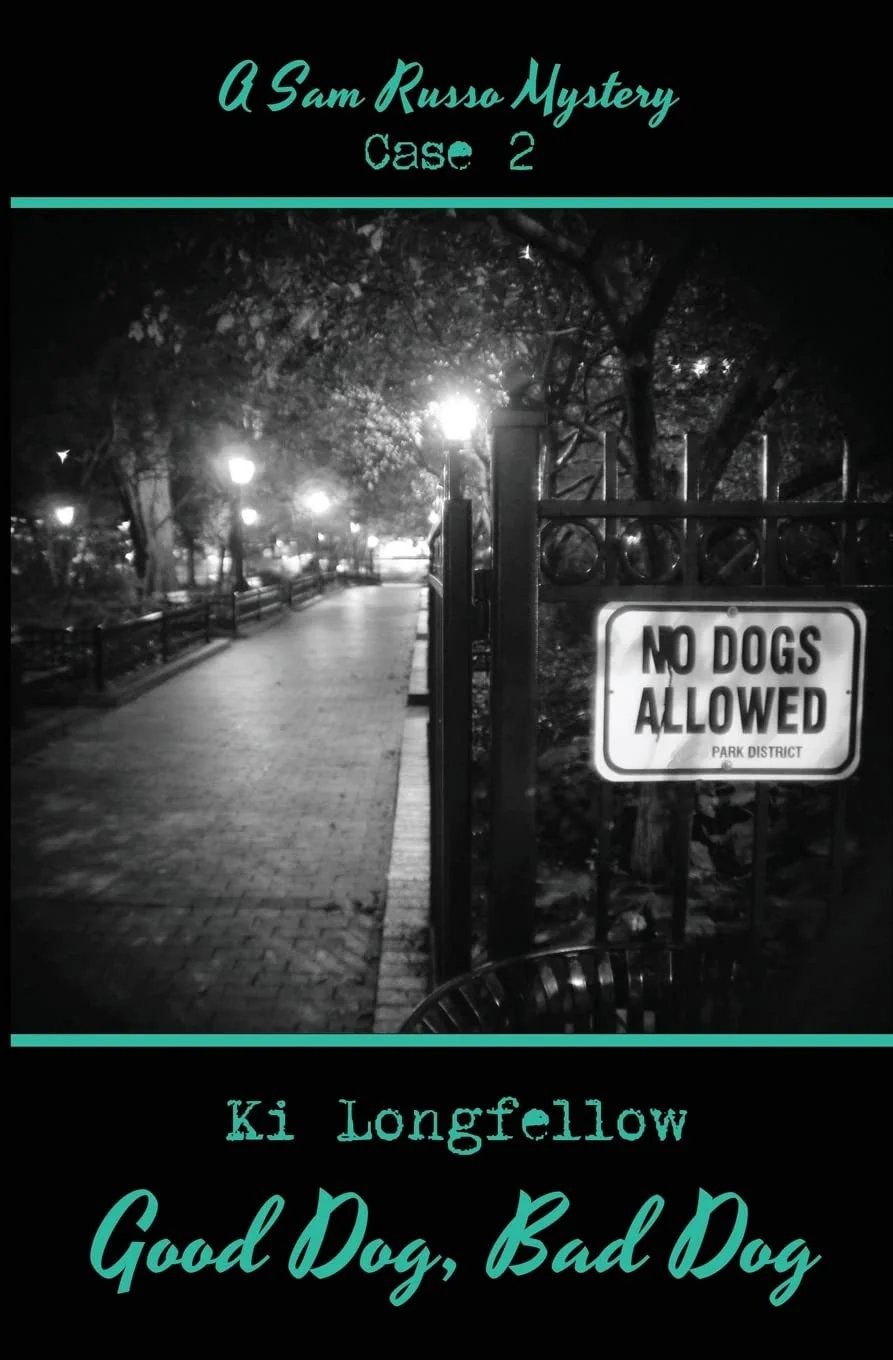The neon lights of Broadway had always beckoned me, even from across the pond. So when I stumbled upon Ki Longfellow’s “Good Dog, Bad Dog” in a quaint London bookshop, its promise of a 1940s New York mystery set against the backdrop of the Great White Way was irresistible. As a music journalist with a soft spot for noir and a weakness for witty animal sidekicks, I couldn’t resist diving into this Sam Russo mystery.
From the first page, I was transported to a world of fedoras, smoky jazz clubs, and the intoxicating energy of post-war New York. Longfellow’s vivid descriptions painted a picture so crisp I could almost smell the hotdogs from the street vendors and hear the clatter of typewriters in dimly lit offices.
The dynamic duo of Sam Russo and his canine companion, Jane, immediately won me over. Their relationship reminded me of the banter between my old mate Dave and his clever border collie – a perfect blend of mutual respect and playful jabs. Jane’s intelligence isn’t just a gimmick; it’s an integral part of the story, adding both humor and unexpected twists to the investigation.
One of the book’s greatest strengths is its pacing. Longfellow keeps the plot moving at a clip that would make a Broadway chorus line jealous. I found myself staying up well past my usual bedtime, muttering “just one more chapter” as I raced through the pages. The author’s ability to weave together multiple threads – the Broadway murders, Sam’s personal struggles, and the colorful cast of supporting characters – is truly impressive.
However, I did occasionally find myself wishing for a bit more depth in some of the secondary characters. While the leads are well-developed, a few of the suspects felt like they could have used a bit more time in the spotlight. It’s a minor quibble in an otherwise thoroughly enjoyable read, but as someone who’s spent years interviewing musicians and trying to capture their essence in print, I’m always hungry for those extra layers of complexity.
Longfellow’s writing style is a treat. It’s snappy and evocative, with just the right amount of period slang to make you feel like you’ve stepped into a black-and-white film. There’s a particular exchange between Sam and a Broadway diva that had me chuckling out loud on the Tube, earning me some curious glances from my fellow commuters. The author’s ability to balance humor with tension is remarkable – one moment you’re grinning at a clever quip, the next you’re on the edge of your seat as Sam and Jane close in on the killer.
What really struck me about “Good Dog, Bad Dog” was how it made me reflect on the nature of partnership and trust. The bond between Sam and Jane isn’t just cute; it’s a testament to the power of unconditional loyalty and understanding. It reminded me of the deep connections I’ve witnessed between musicians who’ve been playing together for decades – that unspoken communication that elevates both parties.
As I turned the final page, I found myself with a newfound appreciation for the golden age of Broadway and a burning desire to dig deeper into the history of New York’s theater district. Longfellow’s passion for the era is contagious, and I’ve already started compiling a playlist of 1940s jazz to accompany my next writing session.
I’ve been recommending “Good Dog, Bad Dog” to everyone from my editor at The Observer to the barista at my local coffee shop. It’s the perfect escape for anyone who loves a good mystery, craves a dose of historical charm, or simply enjoys the company of a clever canine. It’s especially perfect for those nights when you need a break from dissecting the latest indie rock album and want to lose yourself in a world where the music swings and the dialogue crackles.
In a world of increasingly dark and brooding crime fiction, Longfellow’s Sam Russo series is a breath of fresh air – or perhaps a whiff of greasepaint and sawdust from a bygone era. It’s a reminder that sometimes the most enjoyable stories are the ones that make you smile while keeping you guessing.
So, if you’re in the mood for a mystery that’s more gin fizz than gritty realism, more Broadway melody than bluesy lament, “Good Dog, Bad Dog” is your ticket to a rollicking good time. Just be prepared – you might find yourself eyeing your own four-legged friend and wondering if they’ve been holding out on you all this time. Now, if you’ll excuse me, I’m off to see if I can teach my neighbor’s corgi to help me with my next album review. Somehow, I don’t think it’ll be quite as successful as Sam and Jane’s partnership, but a music journalist can dream, can’t he?